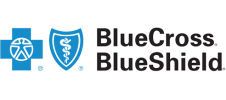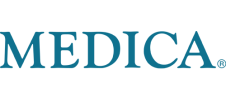Individual Health Insurance
5 Things to know about Obamacare (ACA)
The Affordable Care Act (ACA) affects all of us, so it’s important to understand some key components. The law, also known as “Obamacare” and “The Patient Protection and Affordable Care Act,” was created to give more Americans access to quality healthcare.
President Barack Obama signed the ACA into law in 2010. Since then, some of the law’s provisions have continued to change and evolve. The law includes:
- A guaranteed-issue provision, meaning you cannot be denied health insurance for pre-existing conditions.
- Subsidies to assist low-income Americans in purchasing health insurance coverage.
- Limits on when you can, and cannot, purchase health insurance.
Here are the top five things you need to know about the ACA.
1. The 10 Essential Health Benefits
Every ACA plan is required to cover 10 essential healthcare services. Many plans offer additional benefits, but you can count on these 10 benefits in all plans:
- Prescription drugs
- Pediatric services
- Preventive and wellness services and chronic disease management
- Emergency services
- Hospitalization
- Mental health and addiction services
- Pregnancy, maternity, and newborn care
- Ambulatory patient services
- Laboratory services
- Rehabilitative and habilitative services and devices
2. Tier Coverage
There are four levels, or tiers, of coverage that offer the 10 essential health benefits: Bronze, Silver, Gold, and Platinum. The tiers vary regarding prescription drugs, specialty care, treatments, and other covered medical expenses.
The main difference is how you and your insurance company split the out-of-pocket costs. Bronze plans have the lowest monthly premium but the highest out-of-pocket expenses. Platinum plans have the highest up-front premiums but the lowest out-of-pocket costs.
-
- Bronze: 60% covered by your health insurance provider; 40% covered by you
- Silver: 70% covered by your health insurance provider; 30% covered by you
- Gold: 80% covered by your health insurance provider; 20% covered by you
- Platinum: 90% covered by your health insurance provider; 10% covered by you
There is also another level: Catastrophic health insurance plans. This coverage is available for people under 30 and those with hardship exemptions. These plans are designed to protect you only in worst-case scenarios, where medical costs are often very high.
Beyond premium rates and cost-sharing, there are other variables to consider, such as plan benefits, provider networks, the insurance company, and subsidy availability.
3. Tax Subsidies
If you’re worried about the cost of health insurance, you may be in luck. Depending on your annual income, you could receive financial assistance—in the form of a tax subsidy—to pay for some of your premium. In 2019, 87% of people with ACA plans received this subsidy.
Those making between 100% and 400% of the federal poverty level (FPL) receive a tax credit. (In 2020, that’s $12,490 to $49,960 for individuals and $21,330 to $85,320 for a family of three).
| Your Income Level | Expected Contribution |
| 100% – 133% of the federal poverty level | 2% of your income |
| 133% – 150% of the federal poverty level | 3% – 4% of your income |
| 150% – 200% of the federal poverty level | 4% – 6.3% of your income |
| 200% – 250% of the federal poverty level | 6.3% – 8.05% of your income |
| 250% – 300% of the federal poverty level | 8.05% – 9.5% of your income |
| 300% – 400% of the federal poverty level | 9.5% of your income |
4. Open Enrollment Period (OEP)
Every fall, the Open Enrollment Period begins, allowing individuals and families to sign up for an ACA plan through a variety of options.
For most states, the Open Enrollment Period is November 1 to December 15. Sometimes, states with their own exchanges choose to extend the enrollment period for their residents.
An important detail: In some states, residents who don’t obtain health coverage must pay a tax penalty.
5. Special Enrollment Period (SEP)
A Special Enrollment Period (SEP) allows people with a “qualifying life event” to enroll in an individual health insurance plan outside of the Open Enrollment Period (OEP). The SEP only lasts for 60 days, beginning on the date of the qualifying event.
Qualifying life events can include:
- Non-renewal of your insurance coverage
- Change in family size: This includes marriage, divorce, child birth, adoption, or death.
- Job change: An interruption in health coverage due job loss or getting a new job. In this case, you may apply for new coverage up to 60 days before your insurance is terminated.
- Change in citizenship: Becoming an American citizen, or obtaining national or legal status.
- Government error: Your coverage is changed by an error caused by the Health Insurance Exchange or the Department of Health and Human Services.
- New Address: You move to a new state or county.
Legacy Health Consultants Makes Finding an ACA Plan Easy
Legacy Health Consultants is here to help you find the best price available on the plans we offer. Work with our team to find the Obamacare plans that best fit your needs. Not sure if an Obamacare plan is right for you? Let us help you find coverage, even if your best option doesn’t include plans we offer.
We Work With The Best Individual Insurance Providers
We’ll provide the best solution based on your needs. We offer expert advice and can help you apply for individual and group health plans in Iowa. You can print out an application or get an instant Health Insurance Quote and apply for coverage directly on-line.


Phone
(515) 314-1147
Mailing Address
PO Box 366
Earlham, IA 50072
Office Hours
M-F: 8am - 5pm

